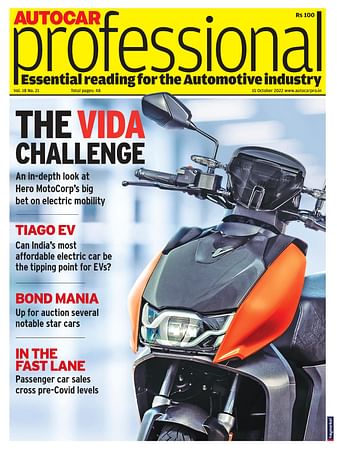World debut for Mahle’s 48-volt vehicle concept at IAA next month
Global supplier develops a demonstrator vehicle for urban mobility; modular platform concept aimed at use across wide range of vehicles; systemic approach improves efficiency and increases vehicle cruising range.
Mahle has developed a highly efficient 48-volt vehicle concept for urban mobility, which can be transferred to a wide range of platforms owing to its modular approach. ‘MEET’ (MAHLE Efficient Electric Transport) will celebrate its world debut at IAA Cars 2017 in Frankfurt, Germany this September.
Increasing urbanisation, a shortage of parking spaces, and a move away from the conventional buyer model to car sharing schemes: these are just some of the factors that make completely new mobility and vehicle concepts essential: compact and agile, convenient, intuitive, connected, and particularly efficient—but still economically viable. Vehicles of this kind have sophisticated specifications. Mahle says its highly efficient 48-volt vehicle concept demonstrates how these core values can be realized through a holistic systems approach.
MEET—MAHLE Efficient Electric Transport
In the urban application area, the technical focus of MEET is on maximum energy efficiency. The meshing of different energy-saving technologies in the areas of the powertrain and thermal management increases efficiency and significantly enhances the cruising range of the vehicle—even and especially at low external temperatures.
The low vehicle mass and the maximum speed of around 100kph, optimised for city requirements, only call for lower drive power and improve the degree of efficiency at the same time. Extensive test drives undertaken by Mahle on a typical city route under different conditions and with different drivers, formed the basis for the power output design. The result was a maximum requirement of around 20 kW. In order to also account for journeys at higher speeds, MAHLE in a first step selected a systems power output of 28 kW for its demonstrator vehicle. This allows a voltage level of just 48 V.
As the voltage level is below the threshold of 60 V, there is no need for cost-intensive protective measures against electrical hazards. Consequently, systems costs are considerably lower than for high-voltage applications with the same driving performance. Furthermore, Mahle says it is systematically exploiting areas of synergy. According to the company, all of the technologies employed can be carried over into large-scale production—thus generating further cost benefits through economies of scale.
First look at the Mahle 48-volt drive
The Mahle IPM (Interior Permanent Magnet Synchronous Motor) traction drive is an extremely efficient combination of a synchronous motor with permanent magnets and integrated 48- volt electronics. The motor provides maximum efficiency and dynamics in a wide speed range. To begin with, the MEET demonstrator vehicle was equipped with a MAHLE drive unit consisting of two motors each with 14 kW of mechanical continuous output and 36 Nm of torque. At IAA the next evolutionary stage with 20 kW and 80 Nm per motor will be presented. The motors drive the rear wheels via a central transmission.
This solution combines several advantages:
- The structure is modular and can be easily modified according to the application, for example for other performance levels.
- The existing 48-volt architecture of hybrid vehicles allows for an easy and cost-effective integration, for instance as a drive unit/electric axis or for an electric all-wheel system.
- The functional safety is increased by means of redundancy in the electric powertrain.
- Maneuverability and agility can be improved with torque vectoring functionality.
- As a result of the wide speed range of the motors, a gearbox is not necessary; systems efficiency is increased through the elimination of switching losses.
Global footprint
Mahle is a leading international development partner and supplier to the automotive industry with its products for combustion engines and their peripherals as well as solutions for electric vehicles. The company’s products are fitted in at least every second vehicle worldwide.
In 2016, the group generated sales of approximately 12.3 billion euros with around 77,000 employees and is represented in 34 countries with about 170 production locations. At 15 major development locations in Germany, Great Britain, Luxembourg, Slovenia, the USA, Brazil, Japan, China, and India, about 6,000 development engineers and technicians are working on innovative solutions for the mobility of the future, says Mahle.
RELATED ARTICLES
Sept 2024 From R&D incentives to EV infrastructure: What auto components industry expects from Budget 2024
Sept 2024 From R&D incentives to EV infrastructure: What auto components industry expects from Budget 2024
US car majors hit the brakes on driverless cars
Ford Motor and Volkswagen to close self-driving startup Argo AI, due to lack of technology and clear regulations.
Autoliv and Geely to develop advanced safety tech for future vehicles
Scope of cooperation includes safety for high-level autonomous driving, intelligent steering wheel technology, a 360deg ...






 By Autocar Pro News Desk
By Autocar Pro News Desk
 05 Aug 2017
05 Aug 2017
 3379 Views
3379 Views









